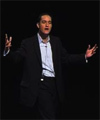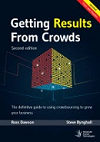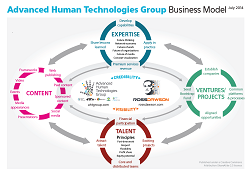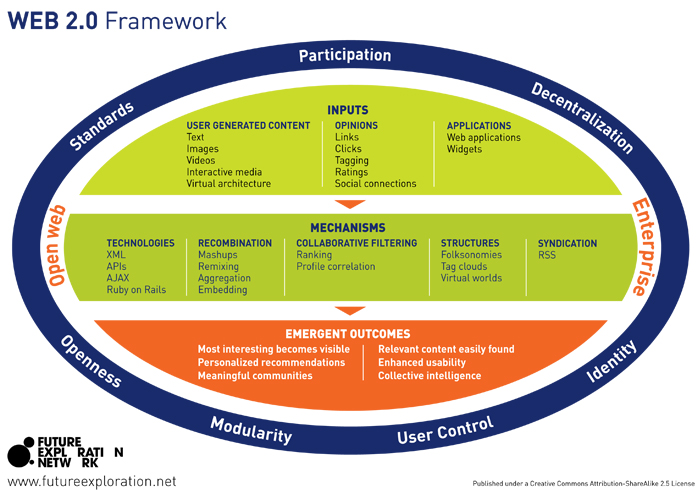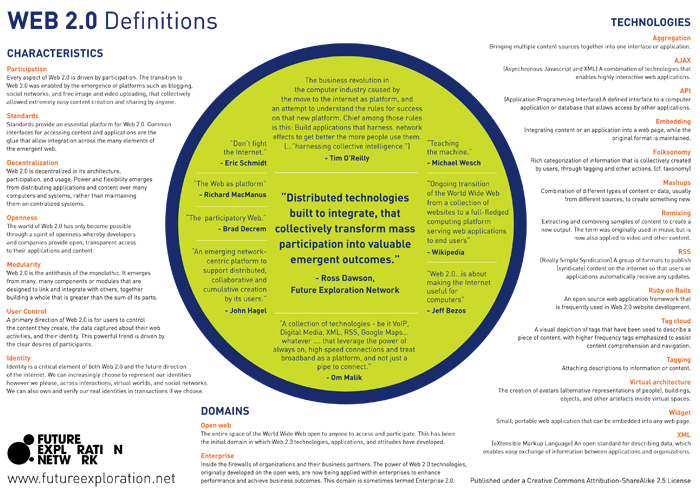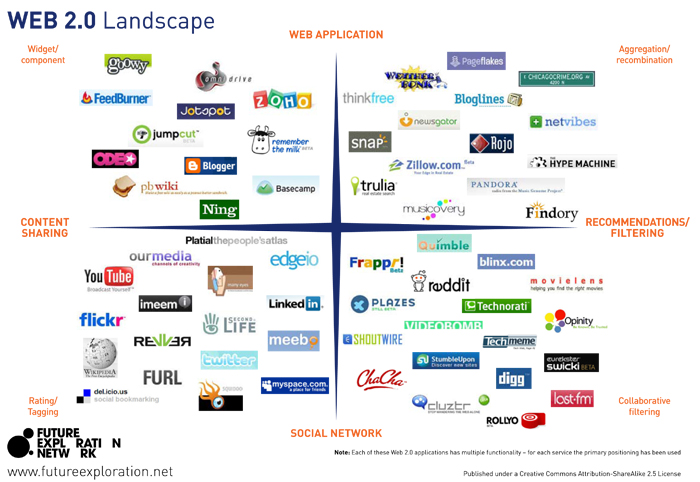Keynote Speaker
Keynote Speaker
Books
In the media
Business Model
Selection of Ross Dawson Frameworks
Web 2.0
Click on the image to see full-size image
Web 2.0 Definitions
CHARACTERISTICS
Participation
Every aspect of Web 2.0 is driven by participation. The transition to Web 2.0 was enabled by the emergence of platforms such as blogging, social networks, and free image and video uploading, that collectively allowed extremely easy content creation and sharing by anyone.
Standards
Standards provide an essential platform for Web 2.0. Common interfaces for accessing content and applications are the glue that allow integration across the many elements of the emergent web.
Decentralization
Web 2.0 is decentralized in its architecture, participation, and usage. Power and flexibility emerges from distributing applications and content over many computers and systems, rather than maintaining them on centralized systems.
Openness
The world of Web 2.0 has only become possible through a spirit of openness whereby developers and companies provide open, transparent access to their applications and content.
Modularity
Web 2.0 is the antithesis of the monolothic. It emerges from many, many components or modules that are designed to link and integrate with others, together building a whole that is greater than the sum of its parts.
User Control
A primary direction of Web 2.0 is for users to control the content they create, the data captured about their web activities, and their identity. This powerful trend is driven by the clear desires of participants.
Identity
Identity is a critical element of both Web 2.0 and the future direction of the internet. We can increasingly choose to represent our identities however we please, across interactions, virtual worlds, and social networks. We can also own and verify our real identities in transactions if we choose.
DOMAINS
Open web
The entire space of the World Wide Web open to anyone to access and participate. This has been the initial domain in which Web 2.0 technologies, applications, and attitudes have developed.
Enterprise
Inside the firewalls of organizations and their business partners. The power of Web 2.0 technologies, originally developed on the open web, are now being applied within enterprises to enhance performance and achieve business outcomes. This domain is sometimes termed Enterprise 2.0.
TECHNOLOGIES
Aggregation
Bringing multiple content sources together into one interface or application.
AJAX
(Asynchronous Javascript and XML) A combination of technologies that
enables highly interactive web applications.
API
(Application Programming Interface) A defined interface to a computer application or database that allows access by other applications.
Embedding
Integrating content or an application into a web page, while the original format is maintained.
Folksonomy
Rich categorization of information that is collectively created by users, through tagging and other actions. (cf. taxonomy)
Mashups
Combination of different types of content or data, usually from different sources, to create something new.
Remixing
Extracting and combining samples of content to create a new output. The term was originally used in music but is now also applied to video and other content.
RSS
(Really Simple Syndication) A group of formats to publish (syndicate) content on the internet so that users or applications automatically receive any updates.
Ruby on Rails
An open source web application framework that is frequently used in Web 2.0 website development.
Tag cloud
A visual depiction of tags that have been used to describe a piece of content, with higher frequency tags emphasized to assist content comprehension and navigation.
Tagging
Attaching descriptions to information or content.
Virtual architecture
The creation of avatars (alternative representations of people), buildings, objects, and other artefacts inside virtual spaces.
Widget
Small, portable web application that can be embedded into any web page
XML
(eXtensible Markup Language) An open standard for describing data, which enables easy exchange of information between applications and organizations.
